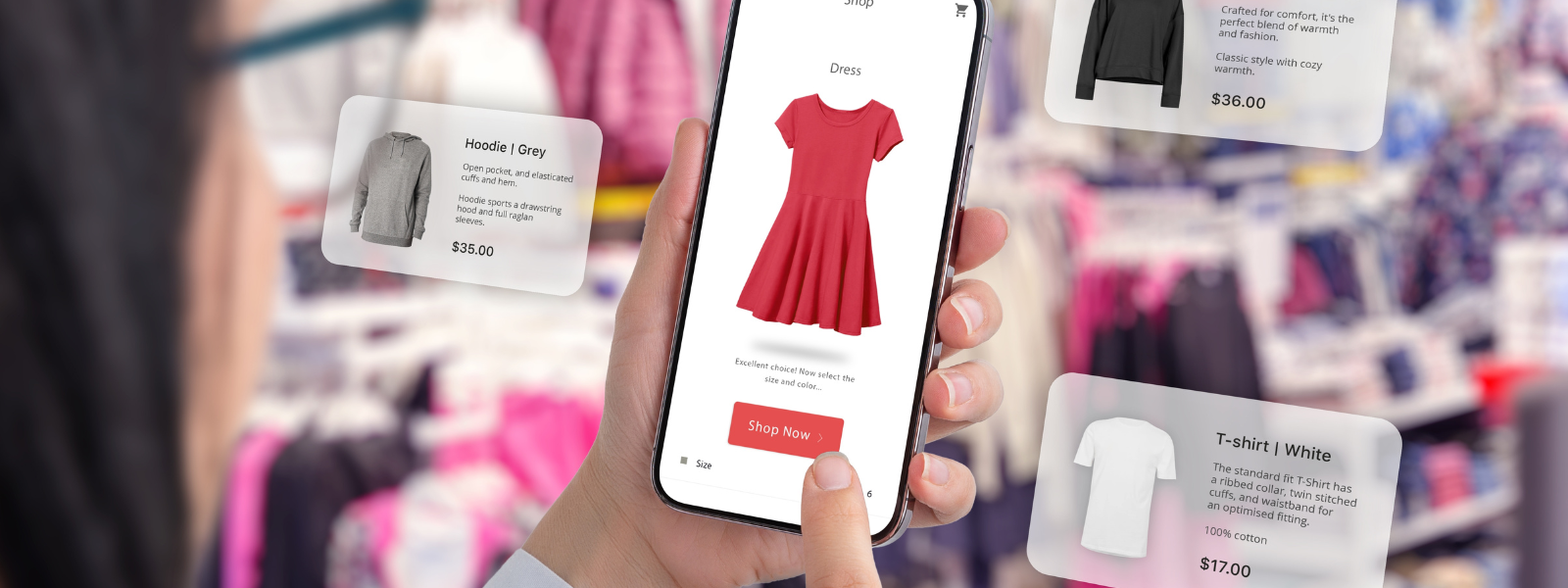The retail world is rapidly evolving, driven by technological advancements, shifting consumer behaviors, and global events. In 2024, shopping trends are transforming at an unprecedented pace. Businesses that want to stay competitive must adapt to these changes quickly. This article will explore the top shopping trends of 2024 and how they’ve changed compared to previous years. We will examine the rise of new technologies, the influence of sustainability, and how consumer expectations have evolved. Let’s dive into the shopping habits that are shaping the future of retail.
Table of Contents
- The Influence of Technology on Shopping Trends
- The Shift Toward Sustainable Shopping
- Personalization: Tailored Shopping Experiences
- The Rise of Social Commerce
- Subscription Services: A Growing Consumer Demand
- The Impact of the Circular Economy on Shopping Trends
- The Evolution of Payment Methods
- In-Store Experience vs. Online Shopping
- The Role of AI in Shaping Shopping Trends
- Predicting the Future of Shopping Beyond 2024
The Influence of Technology on Shopping Trends
Technology continues to play a critical role in shaping shopping trends in 2024. With artificial intelligence (AI), augmented reality (AR), and blockchain becoming mainstream, how have they changed the way people shop?
One of the top shopping trends of 2024 is the rise of AI-driven shopping assistants. These digital helpers guide consumers through their buying journey by providing recommendations based on past behavior, analyzing real-time data, and offering instant customer service solutions. Additionally, AR has transformed online shopping into a more immersive experience. Consumers can now “try on” clothes, shoes, and accessories virtually before making a purchase, significantly reducing returns and increasing customer satisfaction.
Blockchain technology has also begun to change the landscape of shopping, particularly in terms of transparency and security. Customers now demand more ethical and traceable products, and blockchain helps verify the authenticity and sourcing of goods.
How have these technological advancements changed the retail world? Businesses that don’t integrate these innovations risk losing out to competitors who are capitalizing on these trends.
The Shift Toward Sustainable Shopping
The focus on sustainability continues to dominate shopping trends in 2024. Consumers are becoming more environmentally conscious and seek out brands that prioritize eco-friendly practices. This trend is not just about product choices but also includes packaging, shipping methods, and the entire supply chain.
Why has sustainable shopping become such a dominant trend? Increasing awareness of climate change and the environmental impact of fast fashion and overconsumption has led to a growing demand for sustainable products. Retailers are responding by offering products made from recycled materials, utilizing eco-friendly packaging, and committing to carbon-neutral shipping.
Moreover, secondhand shopping has seen a surge in popularity, with more consumers turning to resale platforms and thrift stores. How does this shift affect traditional retailers? Those who fail to embrace sustainability may see a decline in consumer loyalty, as more shoppers prioritize ethical brands.
Personalization: Tailored Shopping Experiences
In 2024, personalization is no longer just a marketing tactic—it’s a necessity. Consumers expect brands to cater to their individual preferences and offer customized shopping experiences. Personalization extends from product recommendations to exclusive offers, targeted content, and even personalized packaging.
How have personalization efforts evolved in recent years? AI and big data play a crucial role in this trend, allowing retailers to analyze consumer behavior and deliver highly tailored experiences. Personalized shopping is also driving loyalty programs, where customers receive rewards based on their unique purchasing habits. However, with personalization comes the issue of data privacy. How can retailers balance offering personalized experiences with protecting customer data? Transparency and trust are key. Retailers must ensure that consumers understand how their data is being used and that their privacy is safeguarded.

The Rise of Social Commerce
Social media platforms have become a significant player in shopping trends for 2024, with social commerce taking center stage. Platforms like Instagram, TikTok, and Pinterest now allow users to shop directly within the app, blurring the lines between content creation and e-commerce.
Why has social commerce become such a powerful force? The seamless integration of shopping into social platforms offers consumers a more engaging and interactive experience. Influencer marketing also plays a crucial role in this trend, with consumers more likely to trust product recommendations from influencers they follow than traditional advertising.
How does social commerce change the game for retailers? It provides a direct channel to consumers, enabling brands to capitalize on the growing trend of impulse buying and fostering a more authentic connection with their audience.
Subscription Services: A Growing Consumer Demand
Subscription services have surged in popularity in recent years, and in 2024, they continue to grow as a significant shopping trend. Consumers enjoy the convenience and predictability of subscription boxes, which range from beauty products to meal kits, clothing, and beyond.
What has driven the rise of subscription services in shopping trends? The desire for convenience, as well as the curated and personalized nature of subscription offerings, has made this model attractive to consumers. The pandemic also accelerated the demand for home deliveries, and subscription services fulfill this need by providing recurring shipments tailored to individual preferences.
Subscription services benefit businesses by offering predictable revenue streams and increased customer loyalty. However, how can retailers ensure that their subscription services stand out in an increasingly saturated market? Personalization, exclusivity, and unique offerings are key differentiators.
The Impact of the Circular Economy on Shopping Trends
The circular economy, where resources are reused and recycled rather than disposed of, is becoming a central theme in 2024 shopping trends. More consumers are seeking brands that participate in the circular economy by offering products that can be reused, repaired, or recycled.
What impact does the circular economy have on shopping habits? Shoppers are turning to brands that offer product take-back programs, recycled goods, and repair services. This shift not only reduces waste but also fosters a more sustainable and responsible shopping culture.
How can traditional retailers adjust to this change? Brands need to rethink their product life cycles and offer consumers more options to participate in the circular economy. Failure to do so may alienate environmentally-conscious shoppers.

The Evolution of Payment Methods
In 2024, payment methods continue to evolve, reflecting consumer demand for flexibility and security. Digital wallets, buy-now-pay-later (BNPL) options, and cryptocurrency are becoming standard payment methods across various industries.
Why have alternative payment methods become so popular in shopping trends? Convenience and accessibility drive this change. Digital wallets offer fast, secure, and seamless transactions, while BNPL services allow consumers to purchase items without the upfront cost, making expensive products more accessible.
How have these payment methods changed the shopping experience? They have made it easier for consumers to complete purchases, driving higher conversion rates for retailers. However, retailers must ensure that their payment methods are secure and accessible to a diverse audience.
In-Store Experience vs. Online Shopping
While online shopping has seen tremendous growth in recent years, physical stores still play a vital role in the retail landscape. However, the in-store experience is evolving to compete with the convenience of online shopping.
What are the top in-store shopping trends of 2024? Retailers are creating immersive, experiential spaces that go beyond traditional shopping. Stores are becoming destinations where customers can interact with products in new ways, attend workshops, or enjoy entertainment.
How can brick-and-mortar retailers adapt to changing shopping trends? By blending the best of both worlds—offering seamless integration between in-store and online shopping. Click-and-collect options, virtual showrooms, and AR-enhanced experiences are helping bridge the gap.
The Role of AI in Shaping Shopping Trends
Artificial intelligence continues to shape shopping trends in 2024 by offering data-driven insights, automating processes, and creating more personalized experiences for consumers.
How does AI improve the shopping experience? AI-powered chatbots provide instant customer service, while machine learning algorithms help retailers understand consumer behavior and predict trends. AI also enhances supply chain management, ensuring that products are available when and where they’re needed.
What are the challenges of AI in retail? While AI offers numerous benefits, it also raises concerns about data privacy and the potential loss of jobs due to automation. Retailers must navigate these challenges while leveraging AI’s advantages.

Predicting the Future of Shopping Beyond 2024
Looking ahead, how will shopping trends evolve beyond 2024? The convergence of technology, sustainability, and personalization is likely to continue shaping the future of retail. Innovations such as the metaverse, biometric payment methods, and even greater integration of AI could redefine how consumers shop in the coming years.
What do retailers need to do to stay ahead of these trends? Staying agile, investing in new technologies, and continuing to prioritize customer experience will be critical. Retailers that can adapt to these emerging trends will thrive in the ever-changing retail landscape.
Conclusion
Shopping trends in 2024 reflect a dynamic and ever-evolving retail environment. From the rise of AI and social commerce to the increasing focus on sustainability, the way consumers shop has transformed dramatically. Retailers that embrace these trends, prioritize innovation, and meet changing consumer expectations will be better positioned for success. The future of shopping promises even more exciting developments, and businesses must remain flexible to stay ahead.